Wednesday, February 13. 2019
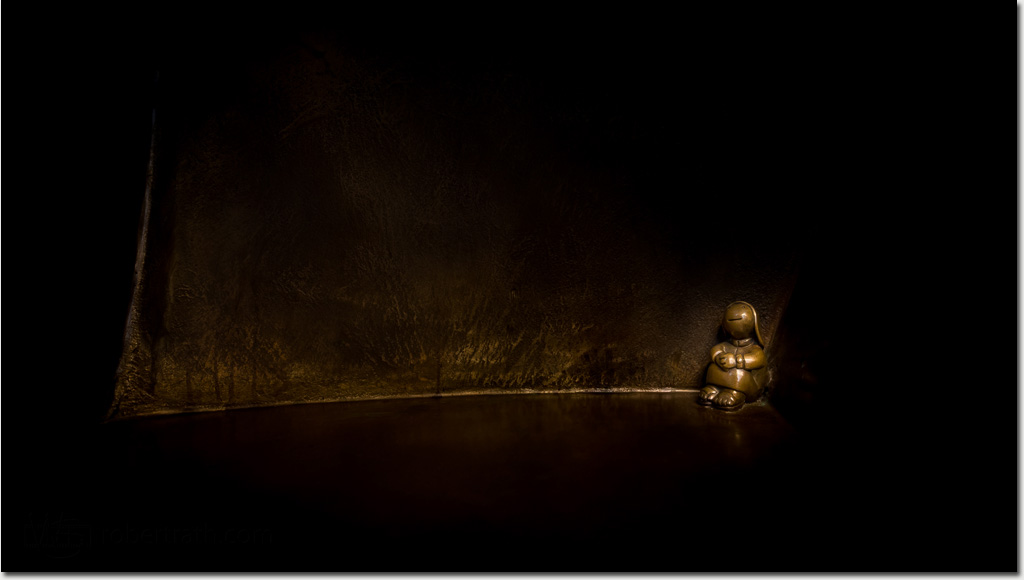
Little bronze personalities came to life in all sorts of nooks and crannies as I continued exploring the 'Other Worlds' installation by Tomm Otterness during my Doha transit.
The four individuals coming together in this scene particularly caught my attention. The couple on the left appear attired in working clothes, overalls and an apron while the couple to the right appear to be of a different class with the more elegant clothing, sandals and even a wristwatch.
Despite their differences I felt that some some cordial engagement was taking place here along with a mutual respect. Perhaps a negotiation or an agreement yet to be made. Perhaps just a meeting of minds.
Photo: Robert Rath, 'A Meeting of Minds' 0.8s f/4.5 ISO320 16mm
Tuesday, February 12. 2019
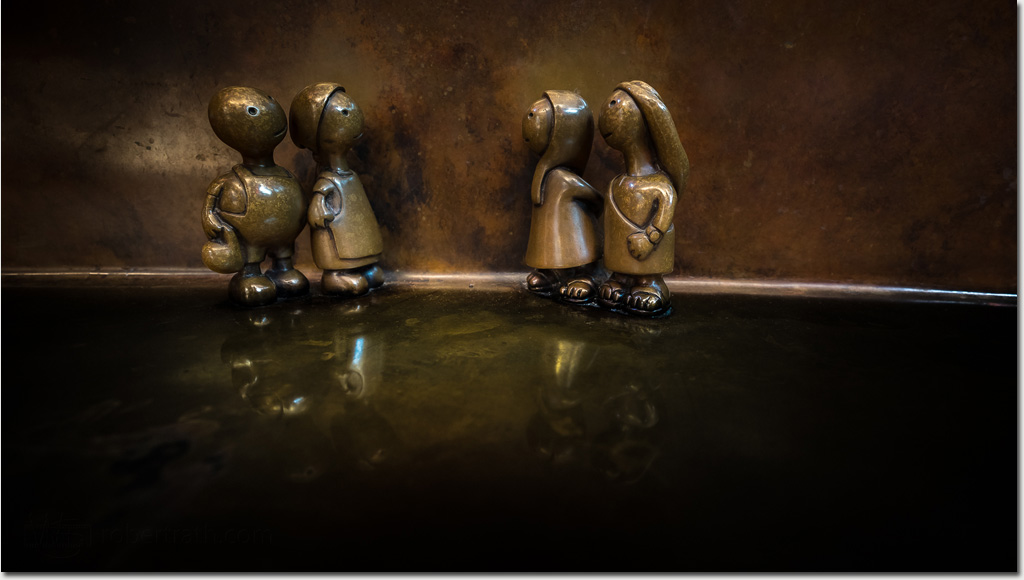
Little bronze personalities came to life in all sorts of nooks and crannies as I continued exploring the 'Other Worlds' installation by Tomm Otterness during my Doha transit.
The four individuals coming together in this scene particularly caught my attention. The couple on the left appear attired in working clothes, overalls and an apron while the couple to the right appear to be of a different class with the more elegant clothing, sandals and even a wristwatch.
Despite their differences I felt that some some cordial engagement was taking place here along with a mutual respect. Perhaps a negotiation or an agreement yet to be made. Perhaps just a meeting of minds.
Photo: Robert Rath, 'A Meeting of Minds' 0.8s f/4.5 ISO320 16mm
Monday, February 11. 2019
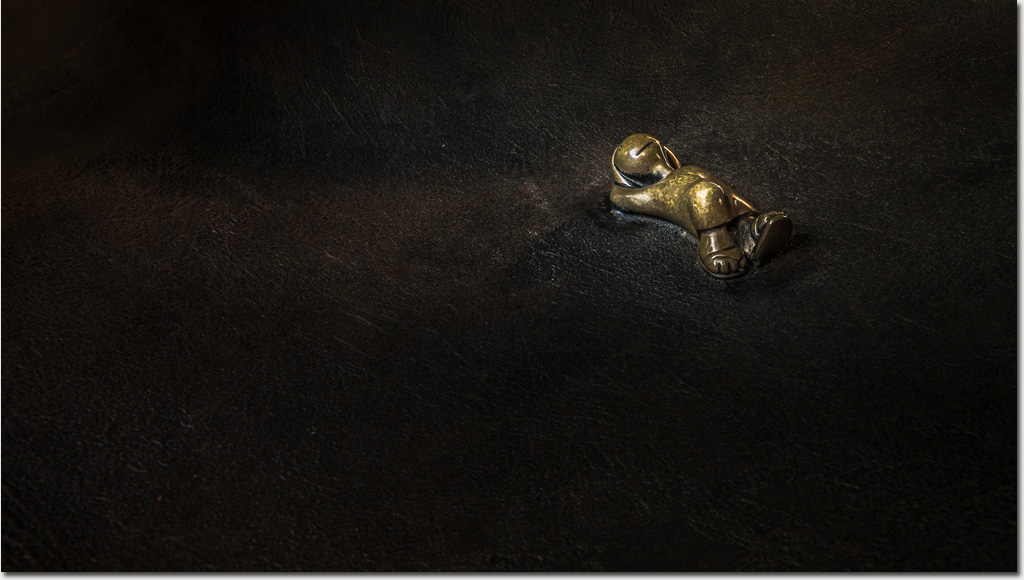
My very first memories of gazing into the heavens and marvelling at the night sky were not so different from the little bronzie in this image.
In my case it was not bronze but the painted steel roof of my parent's car. Somehow those extra few feet made all the difference.
All these year later those memories burn just as brightly when ever I lay on my back and gaze up at the stars.
Photo: Robert Rath, 'Stargazing' 10s f/18 ISO800 26mm
Sunday, February 10. 2019
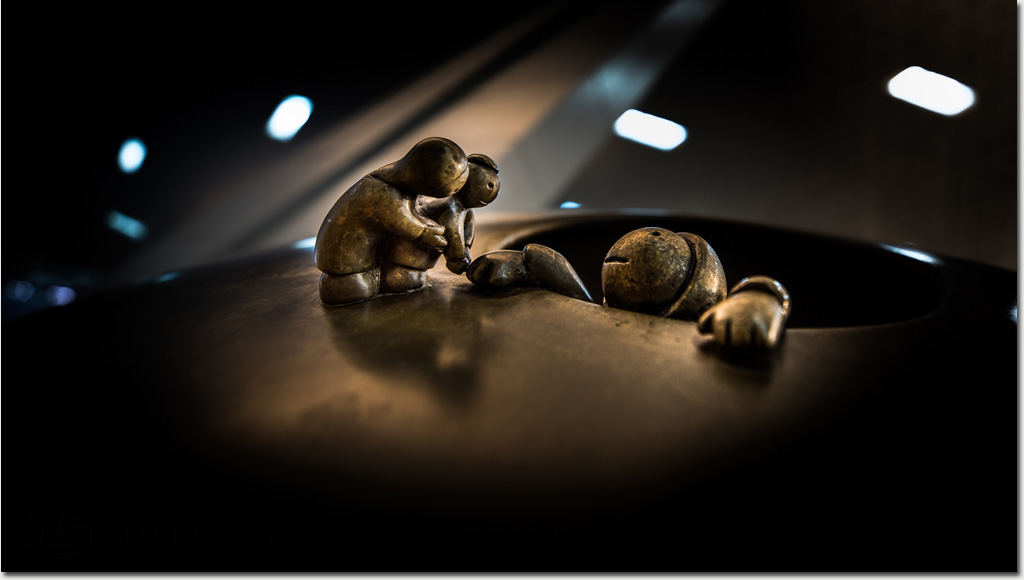
When I first transited via Doha's Hamad International Airport I was impressed by the large interactive bronze sculptures by American artist Tomm Otterness.
At the time I captured some wide angle images of the pieces in context but did not really give them the attention they deserved. I did however notice they seemed to covered by odd little bronze protrusion, like fresh buds on a tree.
On my second visit I decided to explore these little bumps and was delighted to discover tiny little bronze figurines in all sorts of strange places and predicaments. I was so enamoured with these little people I create as set of images I call 'The Bronzies'.
In 'Emergence' I imagined a little bronzie living a life of darkness in a void beneath the ground knowing nothing of the world above until the day a hole appeared.
On climbing out, in a single moment, I feel this scene represent excitement, fear, welcome, relief and joy.
It is delightful, whimsical and simply beautiful. Thank you Tomm.
Photo: Robert Rath, 'Emergence' 1/20s f/3.2 ISO320 16mm
Friday, February 8. 2019
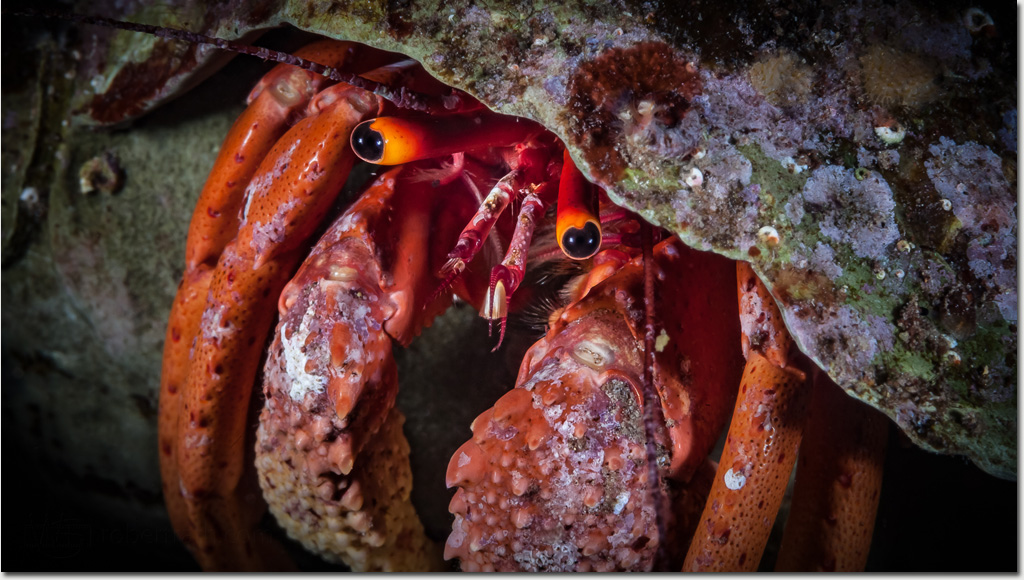
What do dogs and hermit crabs have in common?
I wonder what kind of answers I'd get if I strolled down a typical busy shopping mall and asked random passers-by this question?
Well to start with, dogs and hermit crabs have two eyes. Perhaps you could even draw some tenuous connection between kennels and shells. But really, why would I even pose such a question? From my point of view it is all about having a willing photogenic subject.
For divers, hermit crabs are one of the easiest critters to photograph. They go about their business regardless of being observed. Even if you do startle them back into their shell it doesn't take long for them to re-emerge. And, if some unscrupulous diver were to pick one up and place it somewhere particular to stage a photograph, the hermit crab would happily show itself again when the coast was clear and carry on about its business.
So in my opinion, dogs and hermit crabs both make the most awesomely photogenic and most easy-to-photograph subjects.
Photo: Robert Rath, 'Of Dog and Hermit Crabs' 1/160s f/22 ISO160 100mm
Thursday, February 7. 2019
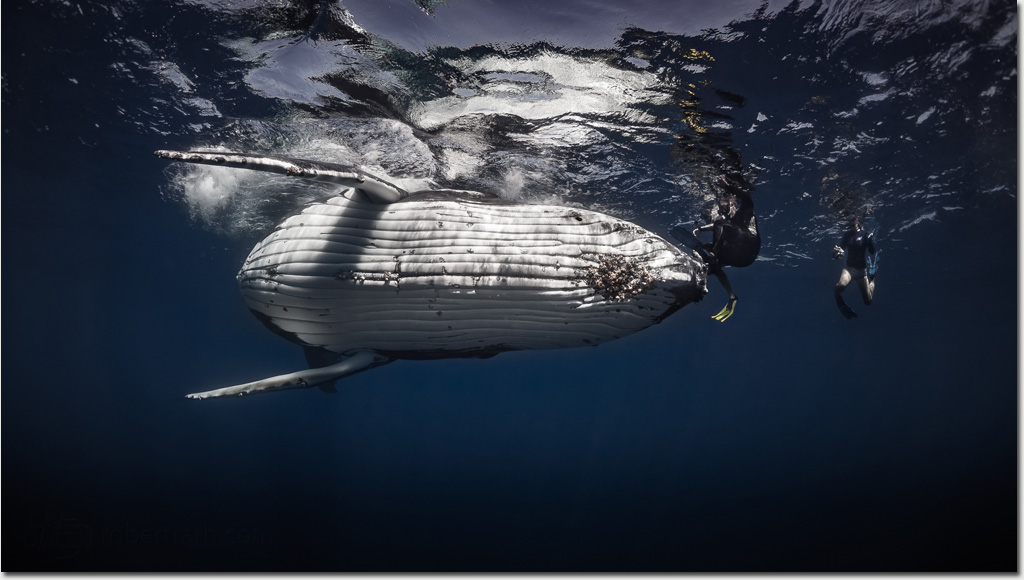
'Hello' said the whale as he swam closer and closer.
'Hello' said the whale as he craned for some intelligent response.
Finally in frustration at their lack of courtesy he came rushing in fast, stopped, then gave a gentle nudge. 'What part of hello did you not get!
Ah ..., memories of Tonga. I can't wait to be swimming with whales again.
Photo: Robert Rath, 'What Part of Hello Did You Not Get!' 1/320s f/7.1 ISO160 15mm
Monday, February 4. 2019
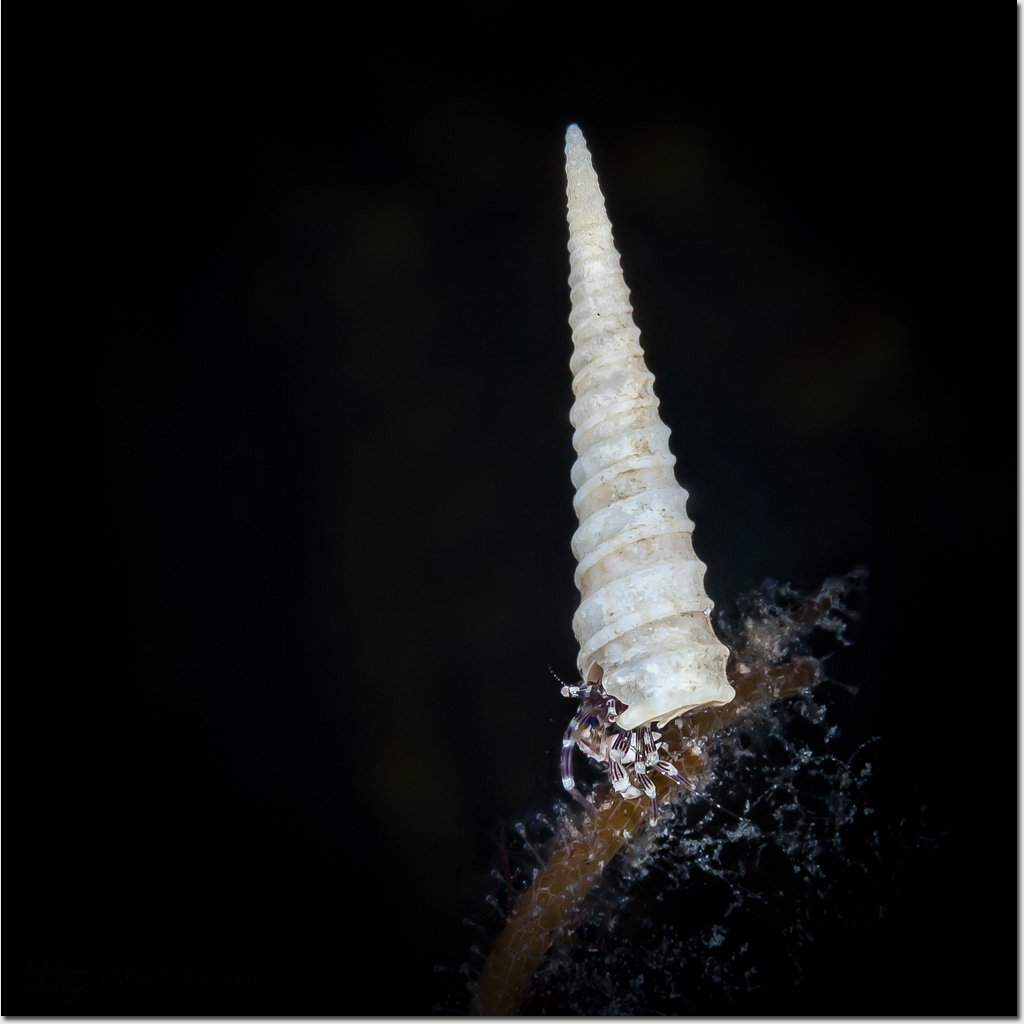
You'd go mad too if you had to carry this home around on your back wherever you went. At least down here you'd not have to worry about clipping power lines, low overhang bridges, getting tangled up in tree line avenues or finding somewhere out of the sun.
I found a lot of these little hermit crabs on the algae in and around Edithburgh jetty. They are so comical to watch as they navigate the between the the stipes and fronds. One moment they seem to know where they are going, the next they've gotten stuck or slipped and are heading somewhere completely different.
This crab, less than half the size of my little fingernail has chosen a particularly tall and impressive shell for its size. Still it seems to be in control. Perhaps its not so mad after all.
Photo: Robert Rath, 'The Mad Hatter', 1/160s f/22 ISO320 100mm
Sunday, February 3. 2019
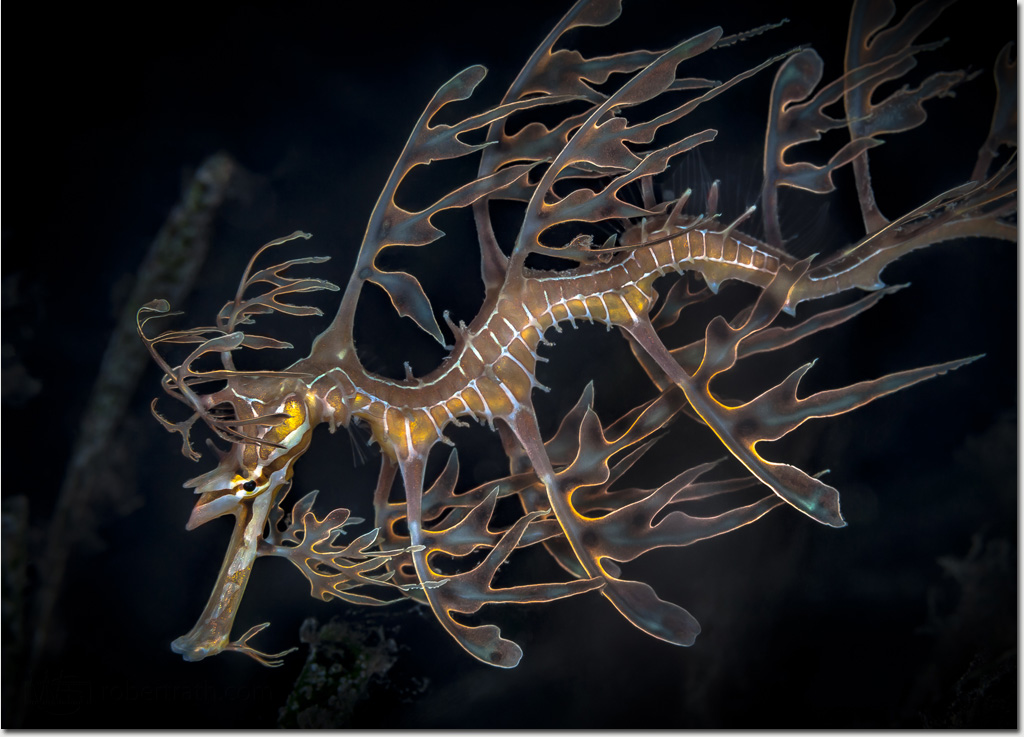
Three weeks ago on an Edithburgh night dive I found a tiny little leafy seadragon less than two inches long that took my breath away. It was that beautiful red translucent colour of a juvenile probably only a month or so old.
This dive I was in for a wonderful treat. I found my not so tiny dragon again, not right next to the jetty but some distance off in the sea grass. Wow had it grown in just three weeks.
Now it had nearly doubled in size and was beginning that red to yellow body colour transition. Its appendages were growing and becoming more complex and its markings becoming more pronounced.
Seeing this beautiful golden dragon a second time as it grows has inspired me to make another trip to Edithburgh to hopefully find it again and capture its change into a fully mature leafy.
Photo: Robert Rath, 'Golden Dragon ', 1/160s f/18 ISO320 100mm
Thursday, January 31. 2019
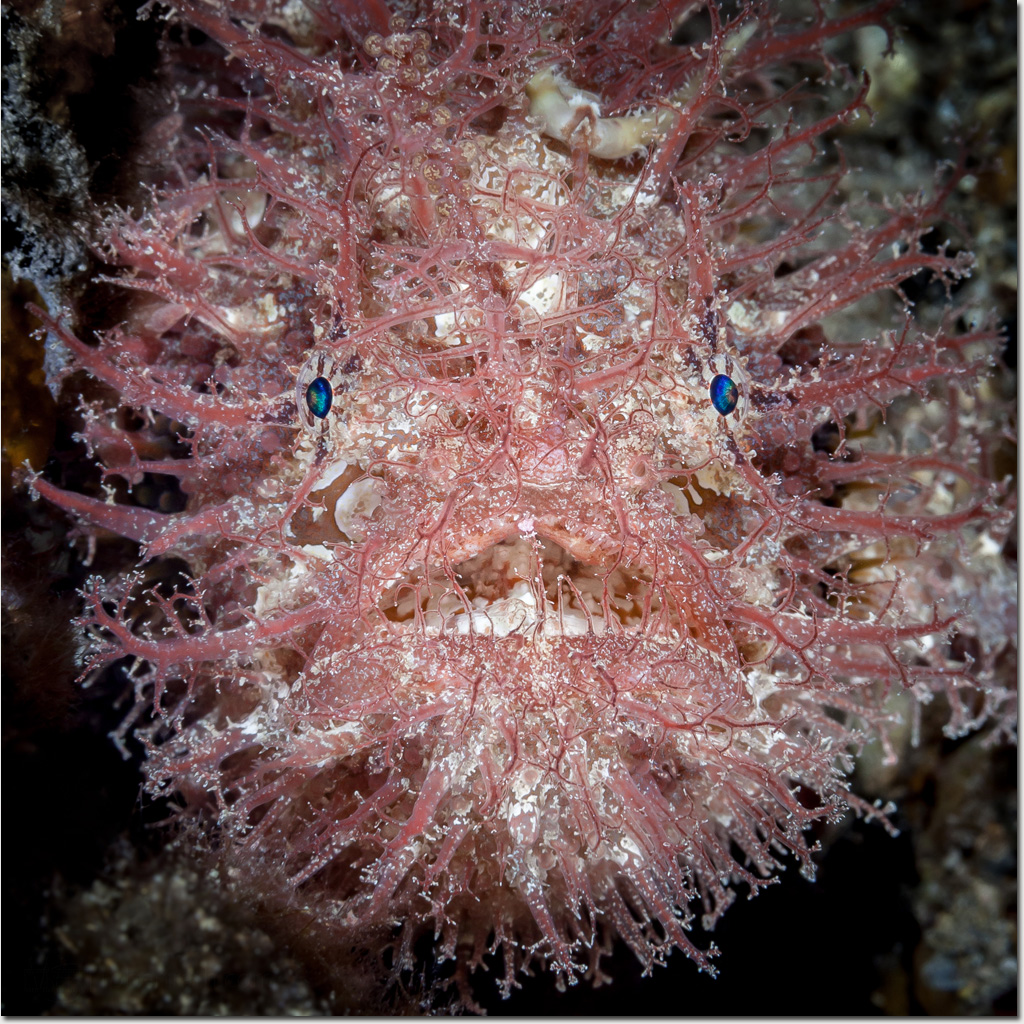
It's night time and you are cruising down Kelp Street looking for a tasty morsel or two. There are no street lamps on the sandy bottom making the ocean floor extra dark. Here the darkness is your friend keeping you safe from monsters. Or is it?
A little confused you create some illumination and ... welcome to your worst nightmare. At least you would be if you were small fish and in less than 1/100th of a second later you'd have become the monster's dinner instead.
To me however this monster under Edithburgh Jetty, the amazing Tasseled Anglerfish (Rhycherus filamentosus), is simply beautiful and I get a thrill every time I find one.
Photo: Robert Rath, 'Nightmare on Kelp Street', 1/160s f/18 ISO320 100mm
Monday, January 28. 2019
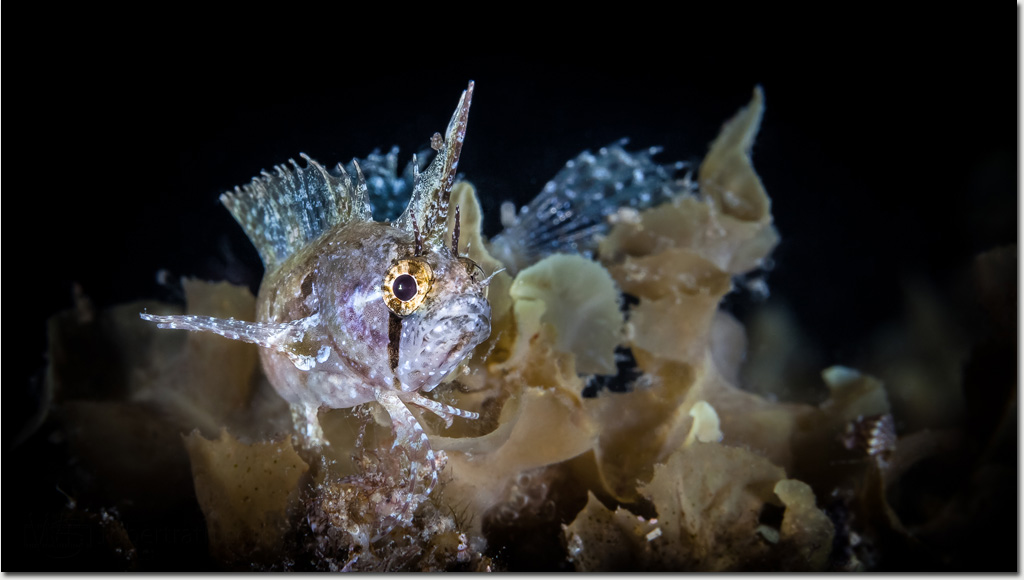
There is no such thing as being lucky, Luck is everywhere, you just need to persist at something long enough and what to you may seem lucky was simply inevitable all along.
This weekend was our second trip to Edithburgh for the year. The weather was perfect creating the opportunity for a number of dives including a night dive. Despite some periods of poor visibility during tidal changes the diving was sensational with the marine life being as prolific as I can remember.
It was on my night dive that I came upon this tiny little crested weedfish, no more than 3cm in length and my very first in over twenty five years of diving here. I simply could not believe my luck as I watched it vi for the best position a top a clump of kelp for the passing plankton. It was quite enthusiastic in its foraging endeavors and seemingly quite oblivious to my presence.
I watched for a while, captured some images and then bid the little guy farewell. After that I really did not care if I did not see any other interesting critters for the rest of the dive or even the trip. I was content with my little bit of crested weedfish luck this time round.
Photo: Robert Rath, 'Crested Weedfish', 1/160s f/18 ISO320 100mm
Thursday, January 17. 2019
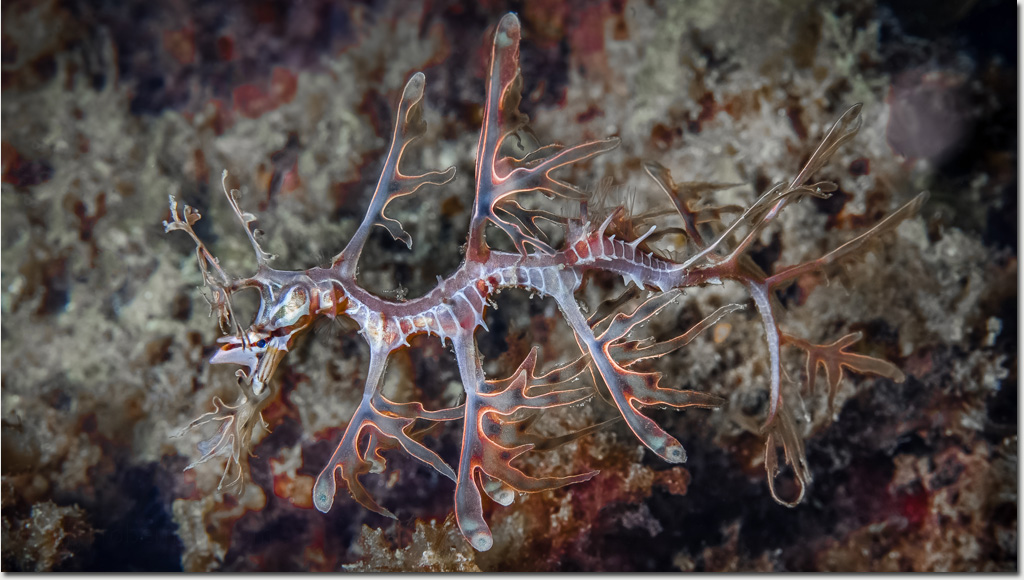
I had spent more than five hours under that sparkling rippled surface that most Edithburgh visitors never get to see beneath. I had searched all around and out beyond the jetty, northward up to to the swimming pool and all over the sea grass beds searching in vain for a leafy seadragon. The diving was lovely but alas no dragon.
Over my years of diving leafy's have been infrequent visitors here. A handful of dragons will take up residence for a couple of years and then disappear with years between. I guessed it was just that time again.
That night I was in for a rare treat. Not more than ten minutes into my night dive this tiny and beautiful dragon, not more than 40mm in length, came into view setting a precedence for a wonderful night dive and hopefully heralding the leafy seadragons back to Edithbugh.
Photo: Robert Rath, 'From Small Things Great Things Come ', 1/160s f/14 ISO320 100mm
Monday, January 14. 2019
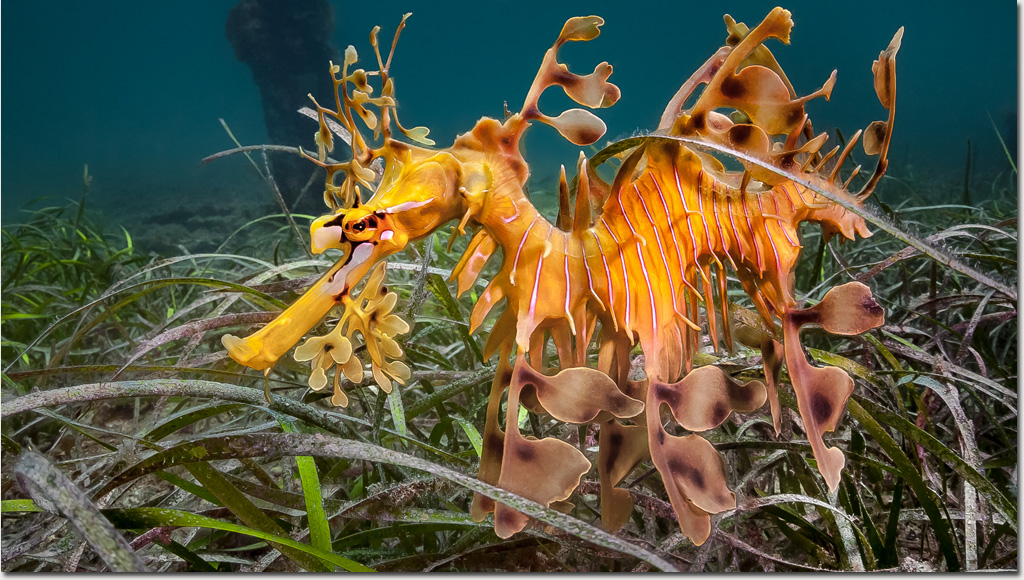
I used to to take great delight in finding a leafy seadragon for other divers, then watching, waiting and counting how long it took them to separate creature from its environment.
Here in the sea grass you would think that they would be easy to spot compared to the yellow or brown algae. Actually I have been surprised just how long some divers have taken to separate the dragon from the detail.
There must have been at least thirty divers down at Rapid Bay last Sunday. I wonder just how many spotted this beautiful dragon feasting on tiny crustaceans out in the sea grass?
Photo: Robert Rath, 'The Dragon Is In The Detail' 1/160s f/10 ISO320 14mm
Saturday, January 12. 2019
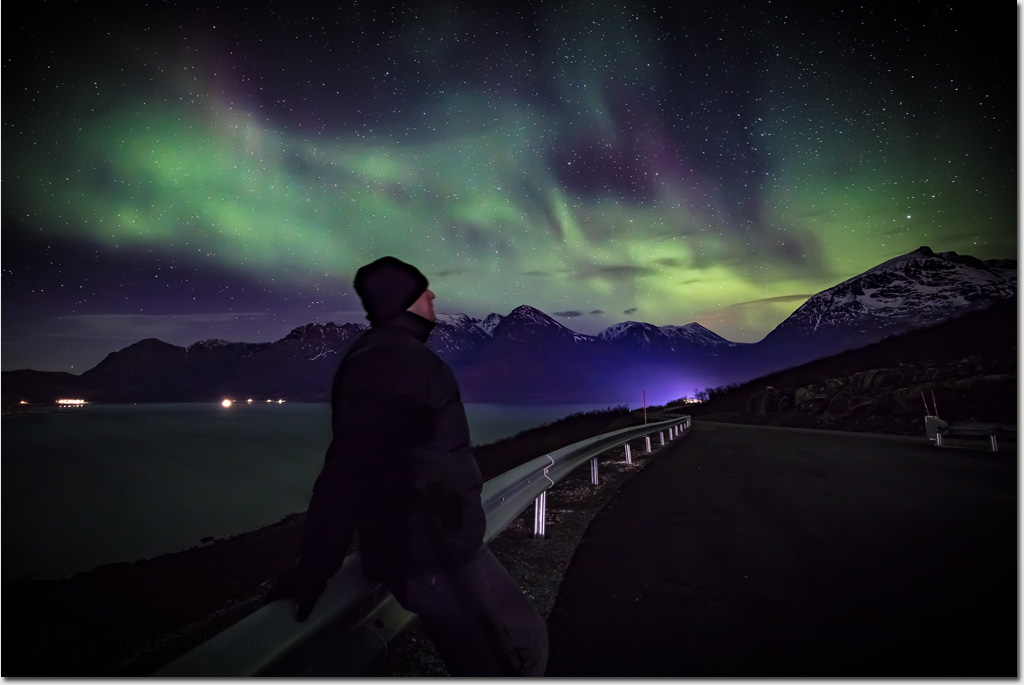
It's been a couple months now since my extraordinary experience in Norway beneath northern lights, swimming with orca and humpback whales and sharing all these incredible experiences with an amazing group of people.
I am blessed not only for my own experiences but also for the way that everyone who I shared this amazing adventure with has also shared their own images, thoughts and feelings. Thank you Pasi, Kei, Carra, Sonya, Chuta, Elvira, Norbi, Krisztina, Peggy, Torben, Jasmine and Darren. It has been my privilege to share Norway with you all.
Oh the wonder of it all. The more I experience our world the more I want to experience our world.
Photo: Robert Rath, 'Oh The Wonder' 20s f/4 ISO1600 16mm
Tuesday, January 8. 2019
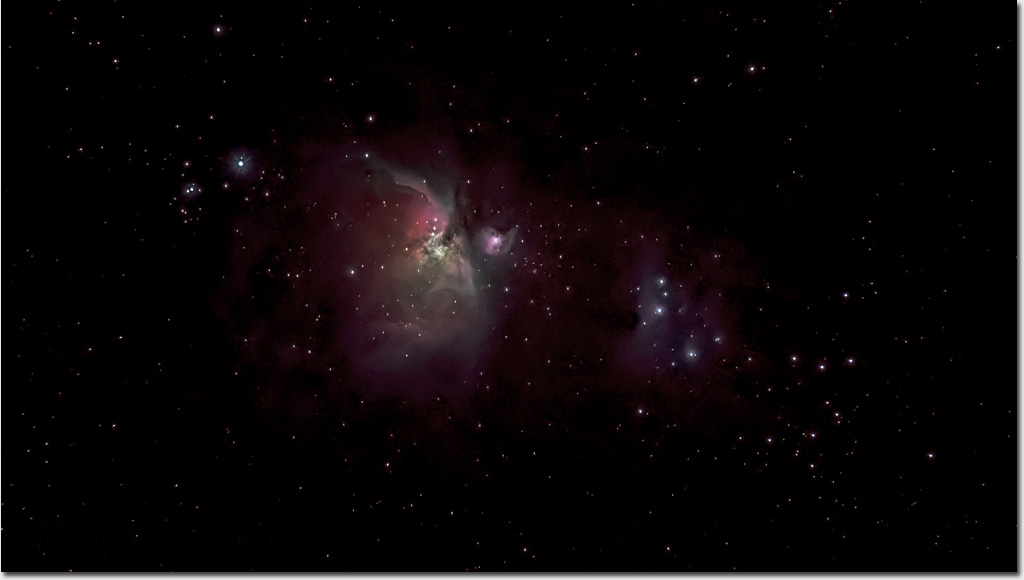
I've Seen Things You People Wouldn't Believe
“I've seen things you people wouldn't believe. Attack ships on fire off the shoulder of Orion. I watched C-beams glitter in the dark near the Tannhäuser Gate. All those moments will be lost in time, like tears in rain. Time to die.”
Rutger Hauer's haunting words spoken by Roy Batty in the 1982 science fiction epic, 'Blade Runner', come to me in those moments lost in wonder gazing at the brilliant dark sky above me.
I was so taken with the brilliance of the stars above me as I emerged from the dark waters of an Edithburgh night dive that I just had to capture something of this beautiful night's sky.
By the time I had cleaned all my gear, set up the tripod and aligned the mount, low-level clouds rolled in from the west and took this wondrous scene away. I might not have captured Orion as I had hoped but at least I got one test shot off before the shoulder of Orion was lost to a blanket of grey above me.
It's only a single frame of what is arguably our Milky Way's most stunning astronomical feature, but I still get those goose bumps looking at it, looking up and imagining all those 'things you people wouldn't believe'.
Photo: Robert Rath, 'I've Seen Things You People Wouldn't Believe' 15s f/10 ISO3200 600mm
Monday, January 7. 2019
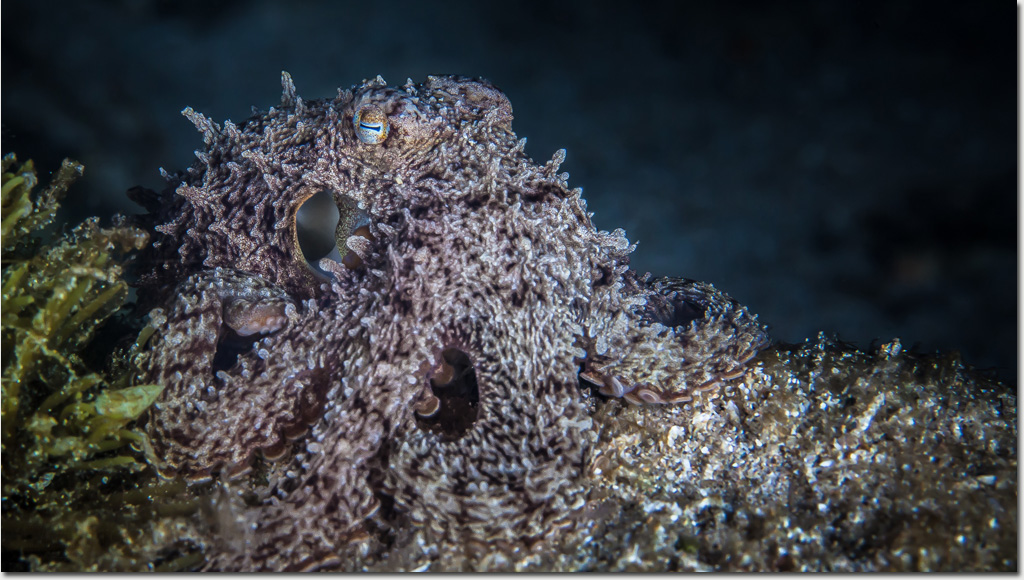
It's 11:00pm and most of the sleepy seaside town of Edithburgh has retired for the evening. Meanwhile I make some final adjustments to my new manual focus gear and then head down to the jetty.
It was only going to be a short dive with a tiny eight litre scuba cylinder. One and a half hour later I surface from an amazing undersea world only to be greeted by a dark sky blazing with stars.
I am always surprised when I dive here at night and this night was no different having had encounters with four different species of octopus. A first for me.
This guy, a gloomy octopus was sitting on a rock literally where I descended to the sandy bottom. At first I just looked at the rock thinking something is not right about that rock. Then slowly the hidden form began to take shape in my mind for what it really was.
I sat and watched for a while, the octopus watched me back. Eventually, getting a little nervous it started to change colour, becoming prickly in appearance and finally getting up on its tentacles before skulking off trying not to be noticed.
And this was only the beginning of my octopus odyssey. Later during the dive I spotted a few keeled octopus, sand octopus and even a couple deadly blue ring octopus.
There were a few other surprises for me on this night dive but I will leave them for another time but I will finish with my thoughts on manual focus gear for macro; 'it roctopusses'!
Photo: Robert Rath, 'Roctopussy' 1/160 f/16 ISO320 100mm
Sunday, January 6. 2019
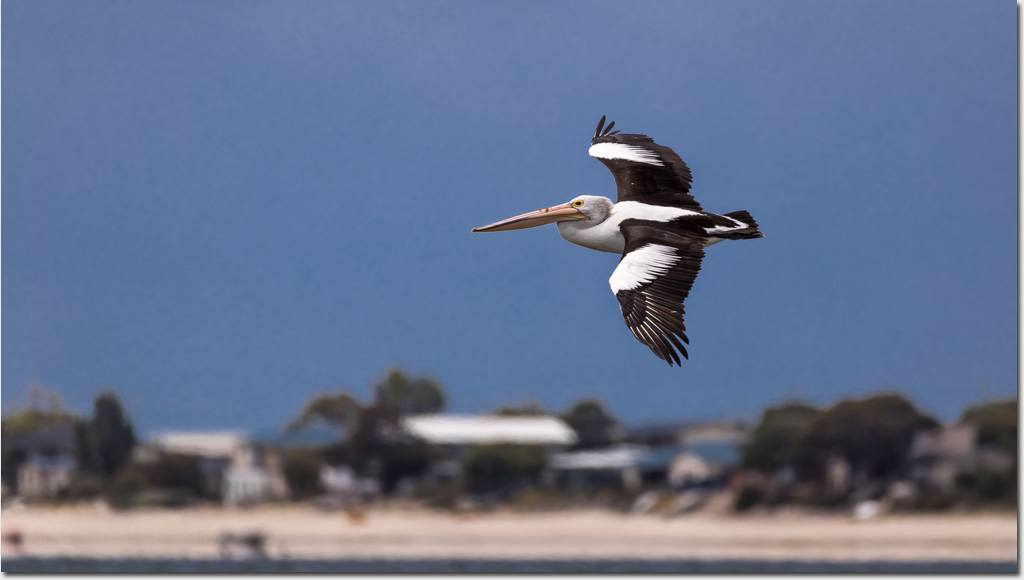
What a lovely way to herald in a new year than to escape to one of my all time favorite places (within a few hours drive) and be reminded why I fell in love with the little seaside town of Edithburgh more than 30 years ago.
On this occasion we only stayed two nights but in that time I spent nearly seven hours underwater, stayed up late under the incredible starry dark sky to photograph the Orion Nebula, enjoyed the company of long time friends and got to walk bare foot on the foreshore photographing birds and dogs and avoiding getting my feet sliced by mussels and razor shells.
It was beach side, blue sky, salty aired relaxing at its best.
Edithburgh, ... we had forgotten how much we've missed you and have resolved to come back more often.
Photo: Robert Rath, 'Blue Sky Banking' 1/1600 f/6.3 ISO100 600mm
Monday, December 31. 2018
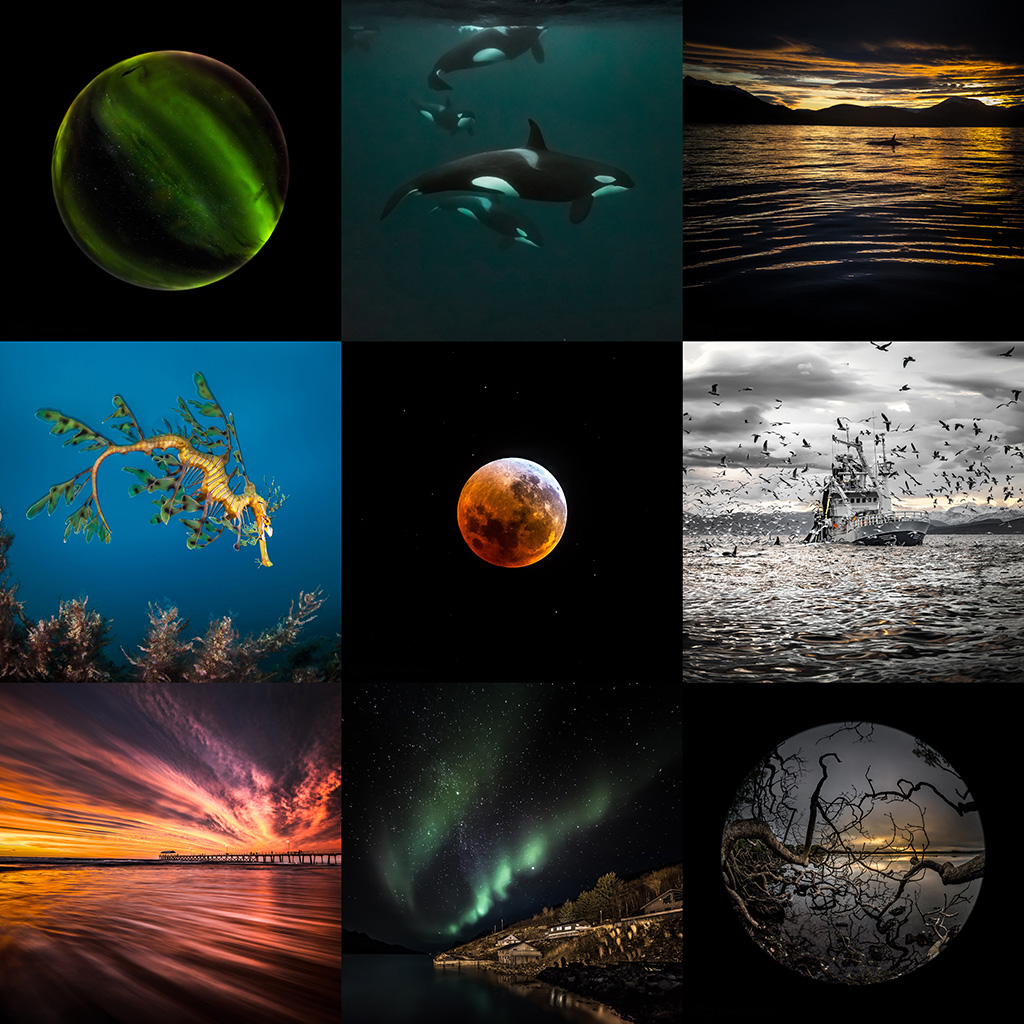
I actually thought about not saying 'Thank you' in the title of this 'best nine' composite image for the year 2018 that was. It just seemed odd, or out of place. I am glad I kept it.
2018 has been a year of highs and lows from injury, and rehabilitation to opportunities to travel and experience some extraordinary places in our amazing world. Over many years photography has changed the way I value places and moments. It has opened my eyes to the joy of sharing. It has helped grow a sense of direction for the future and helped distill my goals for 2019 and beyond.
Looking back I realise how blessed I am for the awesome people in my life from which all this has come. I must thank my closest friends, the ones who encourage my crazy ideas, nag me when I start to get lazy, criticise my attitude when it needs it and make life between adventures fun.
Then there are my peers, mentors, peers, mentors... Those fellow photographers, many also my good friends, who are my inspiration, my competition and my motivation. Of these I am especial grateful for the long time friendship of Darren Jew who has inspired me for nearly ten years now to take on the extraordinary adventures like the Norwegian fjords to swim with and photograph the orca.
Finally thank you to my ever patient and always supportive family, our daughter Rebekah for putting up with yet another photo and to my wife Jennifer for simply letting me go out and do what I love.
Thank you all.
Photo: Robert Rath, 'Thank You For Making 2018 Extraordinary'
Tuesday, December 25. 2018
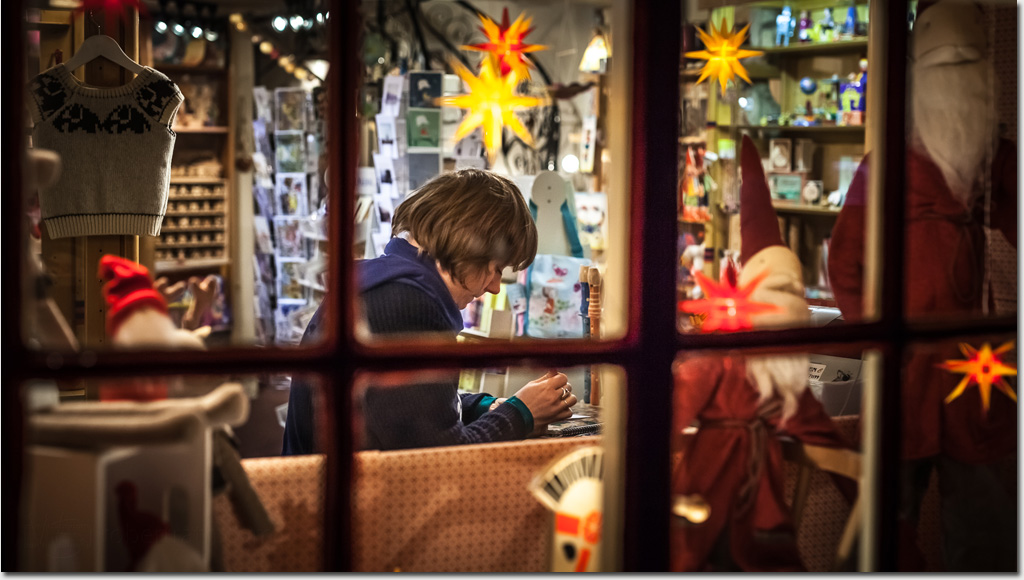 Twas the Night before Christmas
Twas the Night before Christmas
By Clement Clarke Moore
Twas the night before Christmas, when all through the house
Not a creature was stirring, not even a mouse.
The stockings were hung by the chimney with care,
In hopes that St Nicholas soon would be there.
The children were nestled all snug in their beds,
While visions of sugar-plums danced in their heads.
And mamma in her ‘kerchief, and I in my cap,
Had just settled our brains for a long winter’s nap.
When out on the lawn there arose such a clatter,
I sprang from the bed to see what was the matter.
Away to the window I flew like a flash,
Tore open the shutters and threw up the sash.
The moon on the breast of the new-fallen snow
Gave the lustre of mid-day to objects below.
When, what to my wondering eyes should appear,
But a miniature sleigh, and eight tinny reindeer.
With a little old driver, so lively and quick,
I knew in a moment it must be St Nick.
More rapid than eagles his coursers they came,
And he whistled, and shouted, and called them by name!
"Now Dasher! now, Dancer! now, Prancer and Vixen!
On, Comet! On, Cupid! on, on Donner and Blitzen!
To the top of the porch! to the top of the wall!
Now dash away! Dash away! Dash away all!"
As dry leaves that before the wild hurricane fly,
When they meet with an obstacle, mount to the sky.
So up to the house-top the coursers they flew,
With the sleigh full of Toys, and St Nicholas too.
And then, in a twinkling, I heard on the roof
The prancing and pawing of each little hoof.
As I drew in my head, and was turning around,
Down the chimney St Nicholas came with a bound.
He was dressed all in fur, from his head to his foot,
And his clothes were all tarnished with ashes and soot.
A bundle of Toys he had flung on his back,
And he looked like a peddler, just opening his pack.
His eyes-how they twinkled! his dimples how merry!
His cheeks were like roses, his nose like a cherry!
His droll little mouth was drawn up like a bow,
And the beard of his chin was as white as the snow.
The stump of a pipe he held tight in his teeth,
And the smoke it encircled his head like a wreath.
He had a broad face and a little round belly,
That shook when he laughed, like a bowlful of jelly!
He was chubby and plump, a right jolly old elf,
And I laughed when I saw him, in spite of myself!
A wink of his eye and a twist of his head,
Soon gave me to know I had nothing to dread.
He spoke not a word, but went straight to his work,
And filled all the stockings, then turned with a jerk.
And laying his finger aside of his nose,
And giving a nod, up the chimney he rose!
He sprang to his sleigh, to his team gave a whistle,
And away they all flew like the down of a thistle.
But I heard him exclaim, ‘ere he drove out of sight,
"Happy Christmas to all, and to all a good-night!"
Photo: Robert Rath, 'The Night Before Christmas' 1/200s f/2.5 ISO800 50mm
Friday, December 21. 2018

Some people love to travel to foreign destinations. Some people just love travelling.
Airport lounges and stop overs are all part of the mix. The trick is finding the travelling as interesting as the destination.
Having a camera at hand makes all the difference.
Photo: Robert Rath, 'Gate Lounge' 1/5s f/22 ISO100 16mm
Wednesday, December 19. 2018
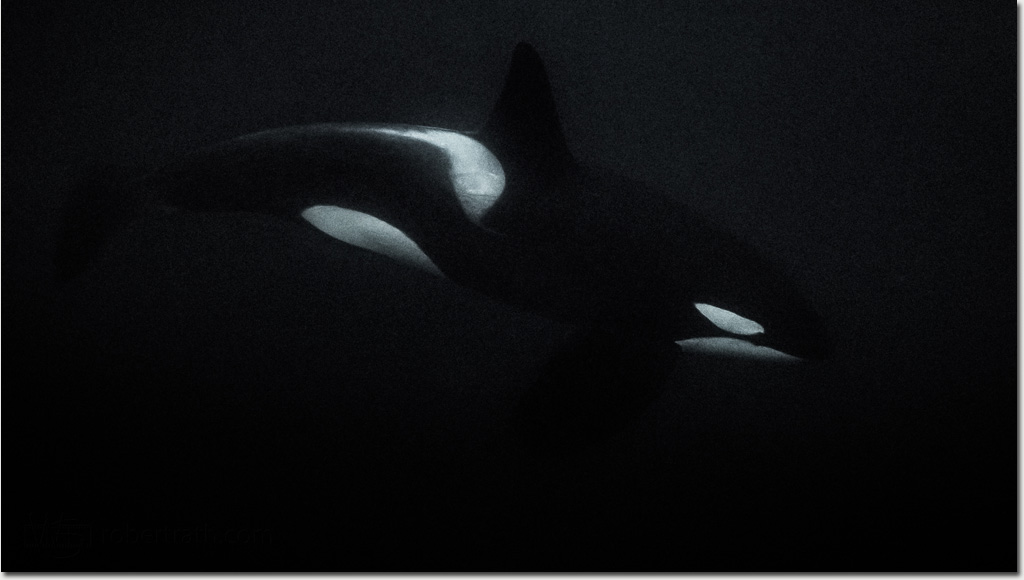
Peering down into the inky, who knows how deep, black water beneath me I was beginning to question the merit of floating out here in a Norwegian fjord well after sunset. Still it's warmer here in the water than in the icy wind above me.
Then suddenly a flash of whiteness snaps me out of my moribund reverie and I am wooting with orca joy again.
I have no idea if I can capture this beautiful creature in the darkness. Perhaps I'll get lucky as he fades into the blackness below.
Photo: Robert Rath, 'A Flash of Whiteness' 1/200s f/2.8 IS12800 35mm
Monday, December 17. 2018
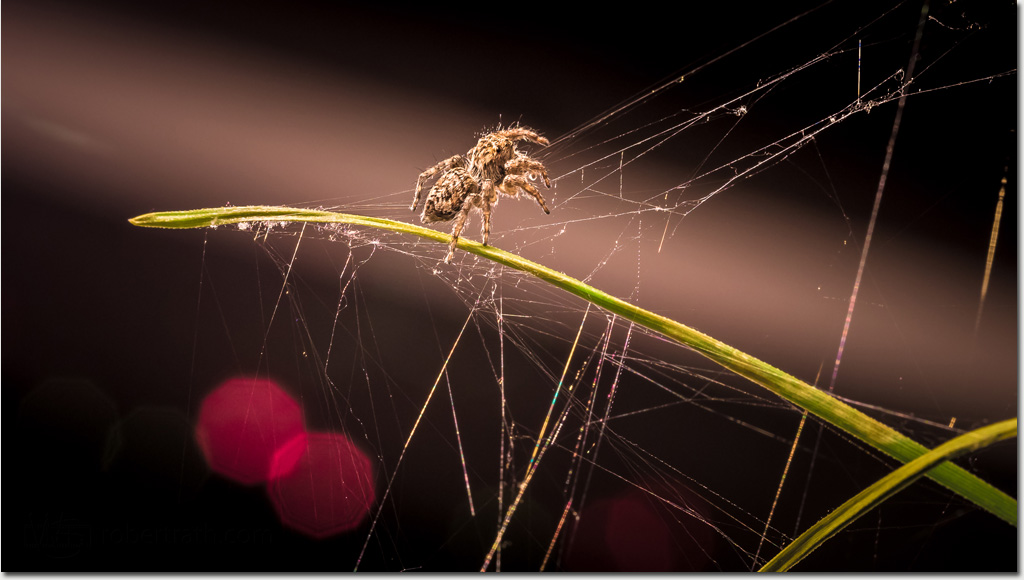
We had just finished putting up the tree. Braced, it . Watered it. Waited a while longer and watered it again.
Soon the room was filled the lovely smell of fresh pine and we stood back to admire our unadorned symbol of Christmas.
Just as we we inspecting the crown we noticed that the prime position was already spoken for. There at the top tracing the pine needle tips was a silver star of web along with it's creator.
It looks like the Christmas trimming has already begun.
Photo: Robert Rath, 'Christmas Spider' 2s f/14 ISO800 100mm
Sunday, December 16. 2018
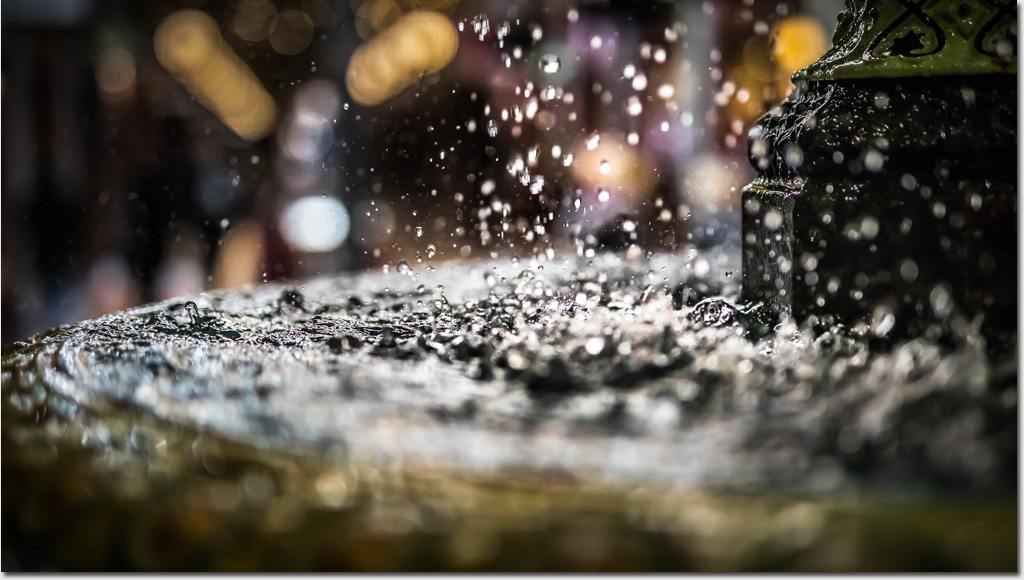
The fountain in Rundle Mall is over 100 years old and seems at odds with the recent modernisation of 'The Mall'.
I am so glad they made it an integral part of our modern mall along with other hints of a bygone age.
As I walk though Adelaide's premier retail precinct I am awed by all the sparkle, the glitz and the shiny things but the fountain makes me smile.
Photo: Robert Rath, 'Splish Splash' 1/1000 f/1.4 ISO1600 50mm
Saturday, December 15. 2018
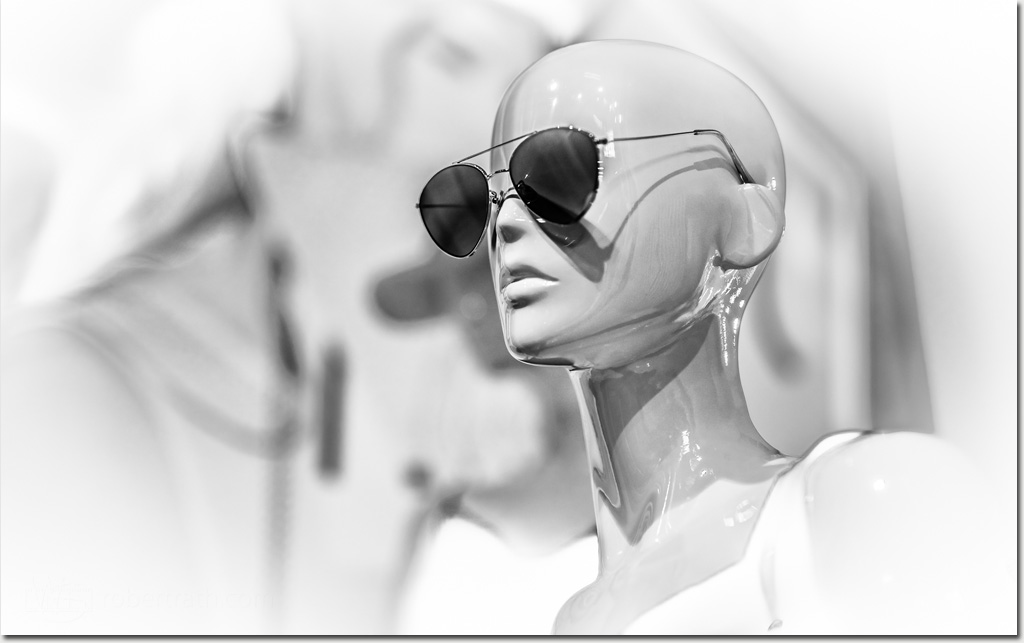
Stroll down any high street and peer into any of the many retail outlets at the goods for sale and shoppers eagerly perusing and purchasing with enthusiasm.
The future must be bright. Even the mannequins have to wear shades ...
Photo: Robert Rath, 'The Future's So Bright', 1/320s f/1.4 ISO320 50mm
Monday, December 10. 2018
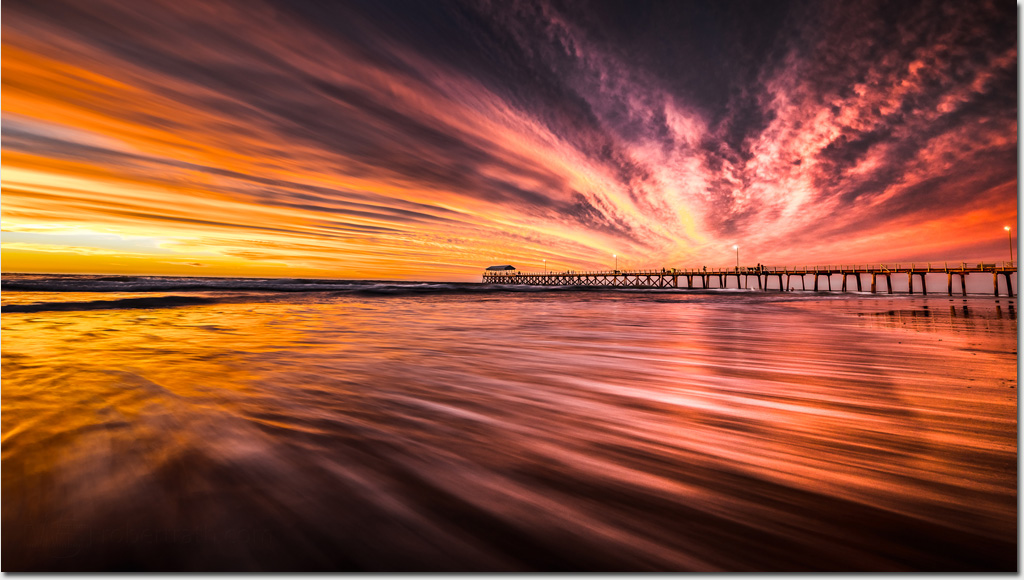
Among the many things I love about Adelaide, are her sunsets which can be something extraordinary.
Being distracted by so many other shiny things of late (metaphor for both orca and long hours at work) it was an absolute delight this weekend past when she turned on one of her amazing sunset spectacles.
It's been a while so I headed down to the ocean and set up my camera in the in the gentle surf of Henley beach and this night I felt like she was welcoming me home again.
Photo: Robert Rath, 'Henley Beach Welcome', 0.4s f/16 ISO100 160mm
Sunday, December 9. 2018
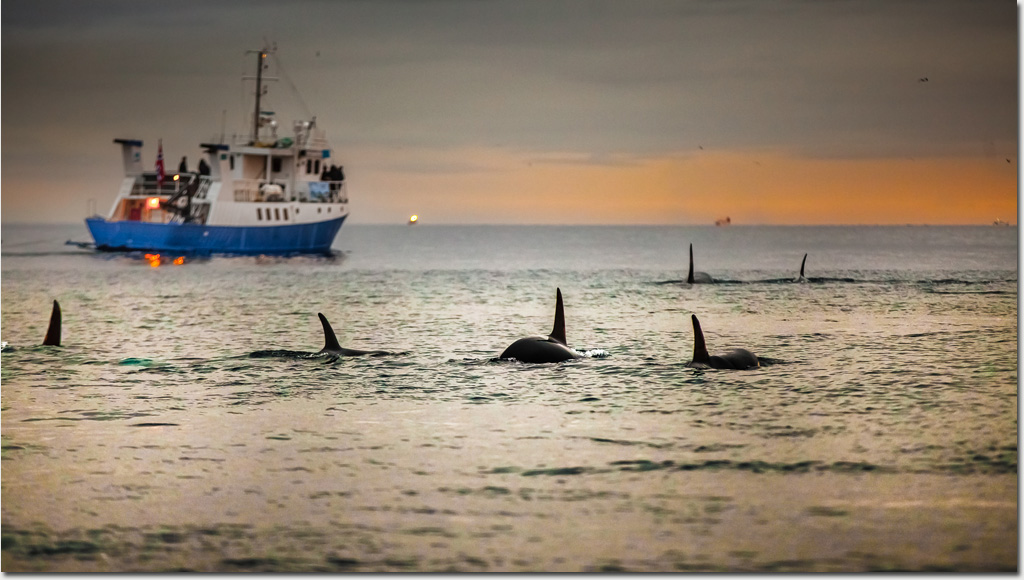
It seems almost idyllic here with the orca in the waters off Skjervøy. The weather has been kind to us but that will not last for much longer.
The mountains which create the deep fjords provide protection from the winds by limiting their fetch and keeping the seas calm. Still there are limits and a storm is on its way. No matter how bad it gets the orca will not mind here in the fjords but not so for us.
We will be sailing from Skjervøy back to Tromsø so must leave before the storm arrives.
'... so long and thanks for all the fish'
Photo: Robert Rath, 'Lazy Days Before The Storm', 1/400s f/2.8 ISO1600 200mm
Saturday, December 8. 2018
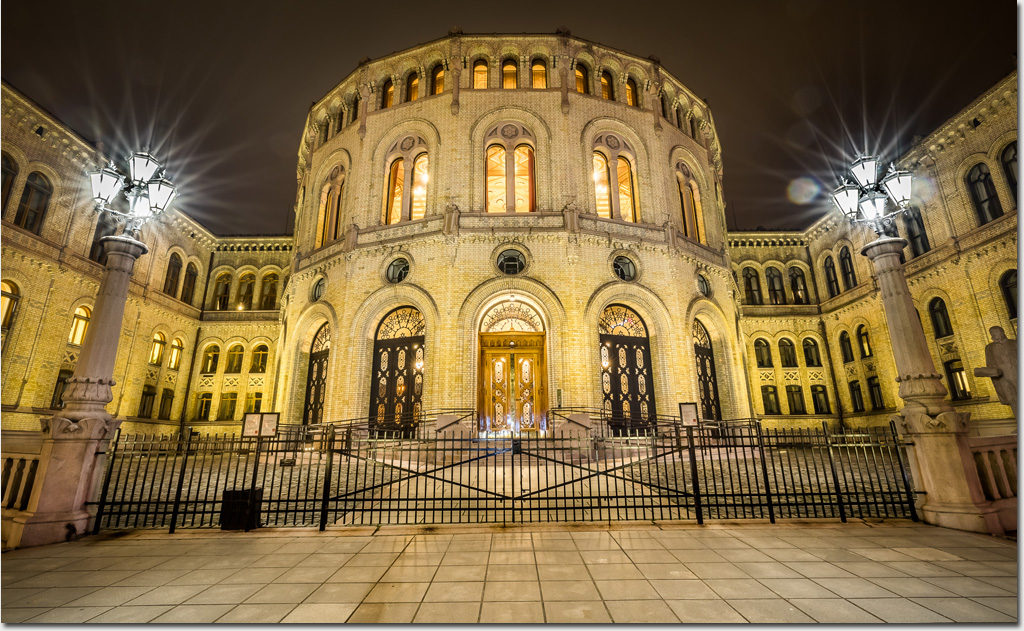
'Stortinget', in the centre of Oslo, is an intimidatingly grand building and well deserving of a captured image during my meanderings through this beautiful city.
Had I been here during the day, and more specifically, on a Saturday, I might have had the chance of a guided tour if I was one of the first 30 people to wait in line. Other than that the only way to see the inside of the The Norwegian Parliament, the centre of political power in Norway, would be to become a Norwegian citizen and get elected to office.
This time around, just capturing its beautiful night time grandeur will be enough.
Photo: Robert Rath, 'Stortinget', 2.5s f/16 ISO160 16mm
Thursday, December 6. 2018
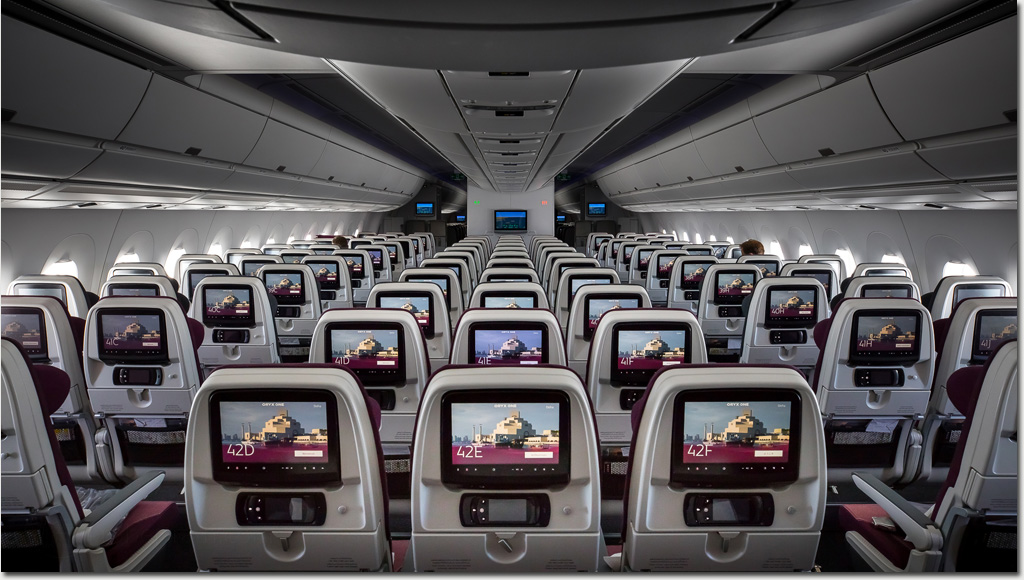
I had my seat allocated and was asked not to change seats until we had reached cruising altitude.
With only four of us in this entire section I was spoiled for choice not just on what side of the plane I'd admire the view from but then which row of seats to choose to sleep for the night.
On a thirteen hour long haul ferry flight with full cabin service who needs a higher class!
Photo: Robert Rath, 'Ferry Flight', 1/100s f/8 ISO800 20mm
Tuesday, December 4. 2018
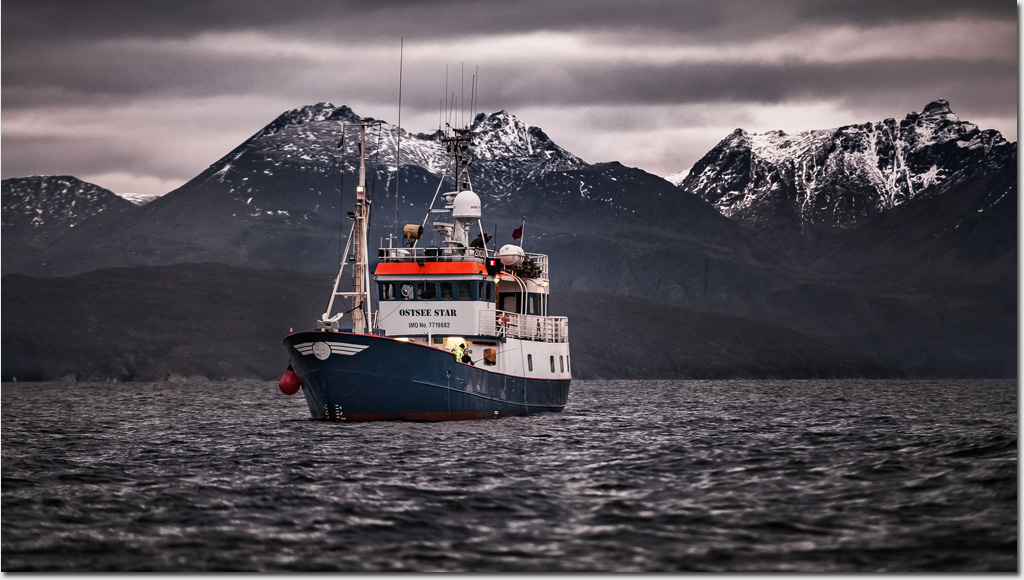
For seven days and seven nights you were our home, our comfort, our security.
You brought us all together.
You shared our conversations.
You kept us protected from the cold.
You gave us a place to sleep at night.
You provided wholesome meals to help us recharge.
We didn't have to come ashore unless we wanted to.
We woke to the smells of breakfast from your galley.
You provided hot showers after days out in the water.
Your coffee machine was always ready.
And you showed us the orca of Norway.
Thank you Ostee Star and Crew, you were awesome!!
Photo: Robert Rath, 'Ostee Star', 1/800s f/2.8 ISO1600 200mm
Monday, December 3. 2018
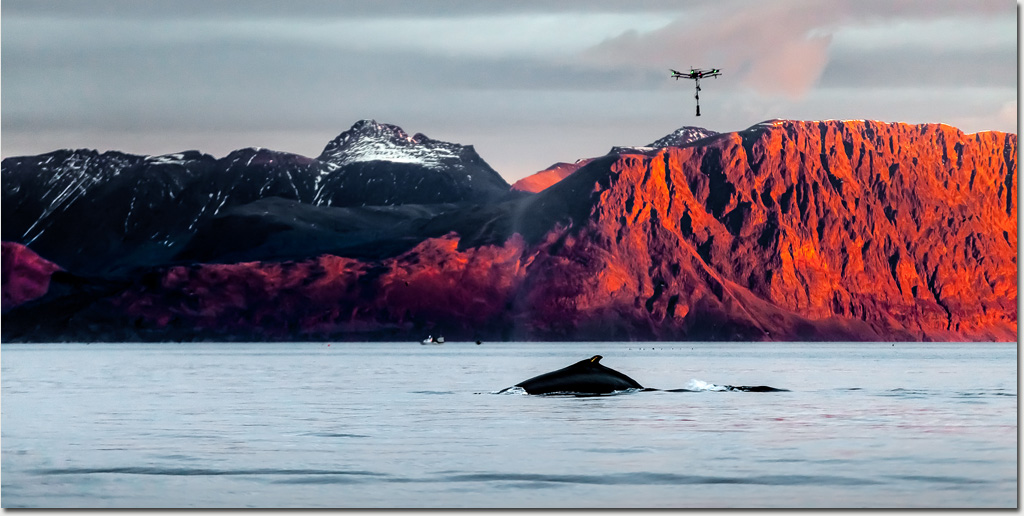
It's not everyday you see such a juxtaposition of ideas in the one moment.
Here we are watching one of the oldest creatures on the planet being stalked by a new predator, the new tech on the block, the drone.
Then there is the realisation you just might be looking at that killer National Geographic footage of a humpback whale preparing to dive from a vantage point you could never have imagined not so long ago. Except that you are outside of the illusion which will capture the imagination of thousands if only for a fleeting moment before the next jaw dropping scene rushes them on to the next visual feast.
Out here it all happens as it happens; in its own good time. That drone or even our photographs may capture beautiful moments but it can never capture an entire day or week or season. To experience that you simply have to be here. Not just for the spectacular moments but for all the spaces that separate them.
Still, I'd love to have been that drone.
Photo: Robert Rath, 'The Humpback and the Drone', 1/640s f/2.8 ISO1600 200mm
Sunday, December 2. 2018
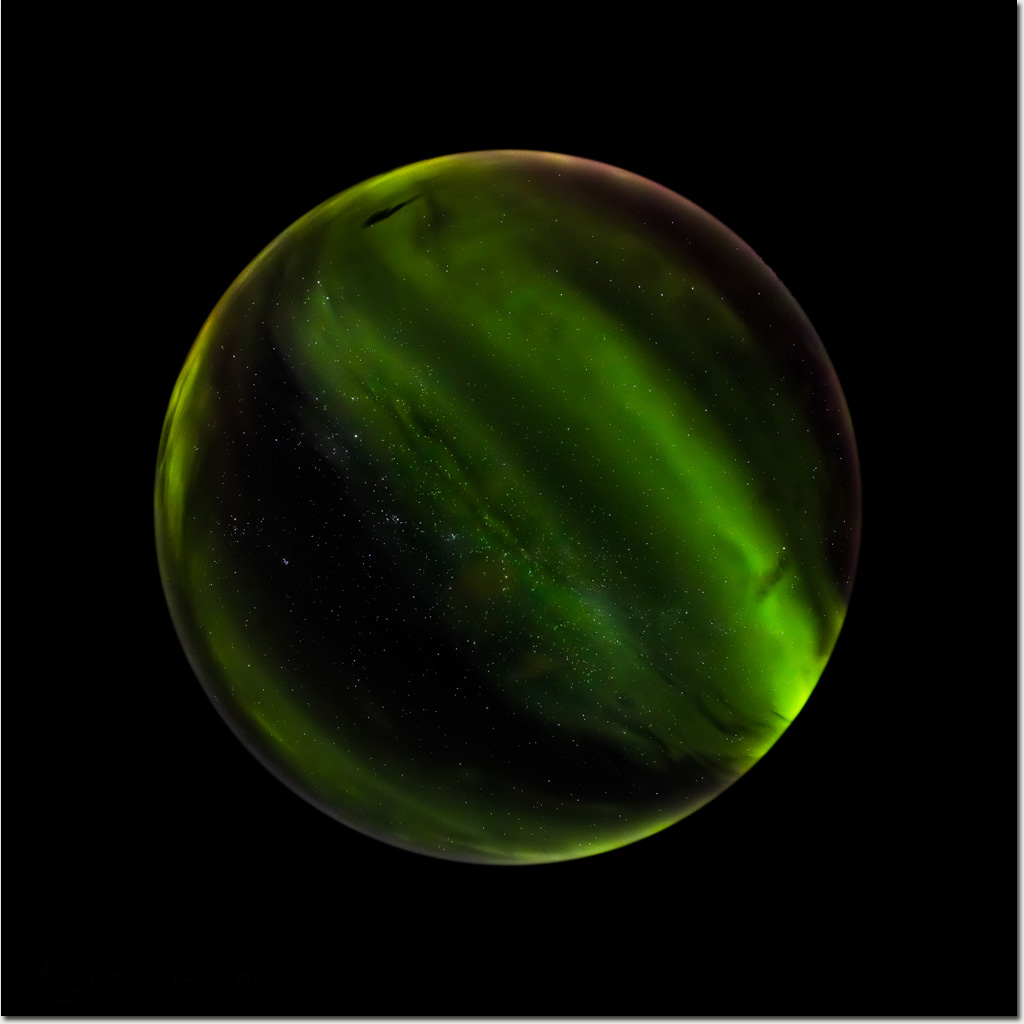
Looking up into the that vast green aurora emblazoned across the Norwegian night sky and how it spread from horizon to horizon you simply cant take it all in in at once. Unless you have the eyes of a fish that is!
Taken with a fish eye lens that has true 180 degree vision you can indeed capture it all at once. At first that unfamiliar circular image just does not make sense to our non-fish brains. It should be rectangular shouldn't it?
Actually even with our own eyes we see the world in circles, just not 180 degrees of it at once. We have just gotten so used to our paintings, pictures, photographs, books, devices and screens being rectangular that we have almost forgotten what our eyes really see.
That night in Skjervøy we saw the eye of the dragon up there!
Photo: Robert Rath, 'Eye of the Dragon', 10s f/4 8 ISO3200 8mm
|